Growing the Fleet: Does PHRF Work?
Published on June 16th, 2019
Gordon Dill and Jim Schrager provide their assessment of how PHRF works for the keelboat racing in their region on Lake Michigan.
There is no shortage of complaints about PHRF, as is true of most rating systems. A fair evaluation starts with the understanding that by design PHRF takes a “single-number” approach. This is done for convenience, low cost, and ease of use.
PHRF is not meant for leading-edge Grand Prix racing but instead designed to be the most popular rating system for non-professional racers–which it is.
It may be more accurate to have different ratings for differing wind and water conditions. But that requires human judgment to toggle through the various alternatives and select those most representative of each race. Wisely, PHRF trades away this complication to make simplicity the key.
Beyond the single-number compromise, the real test for PHRF handicaps is in the racing. Do PHRF handicaps allow for good, close competition? In St. Joseph, Michigan we have been watching this intently for over a decade. We can report that competition is amazingly close–even from different-sized boats with surprisingly wide rating spreads–if you follow a few simple rules.
Those who have studied PHRF results realize the racing is better if you race “similar boats” together. In St. Joseph that means our Spinnaker boats are production and custom race boats of any age, while our Jib and Main (JAM) fleet is older production racer-cruiser boats (30+ years old) and pure cruising boats of any age.
We use the Time-on-Time scoring adjustment, constant at a single value for the entire season which helps smaller boats remain competitive in lighter air. Using this simple formula, the results at the top of the fleet have been exceptionally close.
In our Spinnaker section for over a decade, two well-equipped and expertly-sailed race boats–an older Soverel 33 and a newer Farr 395–fought back and forth year after year, regularly splitting Boat of the Year awards.
These two boats rate an astonishing 63 seconds a mile apart from each other, yet were consistently neck and neck on corrected time. This was the smallest boat in the fleet against the largest; a symmetrical Spinnaker rig against an asymmetrical Spinnaker bow sprit boat; one with a carbon fiber mast, the other a standard aluminum spar. The Farr 395 has a deep draft bulb keel while the Soverel 33 is designed with a conventional underbody.
Although these boats took different paths to sailing speed, both were similar in their design brief, placing performance on the race course as the top objective. PHRF allowed these two race boats—from different design generations—to compete neck and neck with each other despite the wide rating spread between them.
This consistent pattern of close racing for over a decade–in spite of the big rating spread–convinced us that PHRF did a great job, allowing the skill of the sailors onboard to make the difference in who wins and loses.
That wasn’t true in JAM until we developed a fleet of similar older production racing-cruising or pure cruising boats. We don’t allow boats with exotic fibers in the hull, carbon fiber masts, or bow sprits in JAM. No one-off racing boats either. Once we made that change, two old production boats delivered close racing over six years trading Boat of the Year back and forth.
Here we had an Evelyn 32-2, a lightweight, masthead-rigged production boat, well sailed by one of our Club’s former Commodores and his talented crew, against a Cayenne 41, a heavy, ocean-cruising boat built for the rough waters of the North Atlantic, with a non-cored fiberglass hull, lots of furniture down below, an aft cabin, and a short fractional rig, as if intended for the windy environs of San Francisco Bay.
Yet, year after year, in our light-air, flat-water sailing venue, these two boats finished neck and neck on PHRF corrected elapsed times as if they were in a one-design fleet.
One of the secrets of this outcome is that over the length of an entire season we sail in many different wind and water conditions. The single-number rating system may benefit one boat one week but will favor others in a following week.
This doesn’t work as well with PHRF for point-to-point long distance races where boats may sail in favored wind and water conditions for long periods. But PHRF for a season full of course races has worked remarkably well over an extended period of time.
We also watch how many different boats win races during the year, even if they don’t race every week or win enough to be in contention for Boat of the Year. In Spinnaker, a recent arrival and now our smallest boat, an Ultimate 20, won races in 2018 and in 2017 tied for first place in our Summer Series. In JAM, one of our smallest boats, an S2 7.9, handily won the 2017 Summer Series and an O’Day 28 won a heavy-air race in 2018.
Of course, these small boats need to be well-sailed to win–but the same is true of the bigger boats. For Boat of the Year, JAM in 2017 had two runner-ups tied just one point behind the Boat of the Year winner. In 2018 the JAM Boat of the Year was not decided until the last race of the year. It has been very competitive for JAM Boat of the Year over the last eight years and we see no sign of that changing.
The overall level of competition in each harbor brings its own effects. One can imagine a new program at a small harbor filled with inexperienced racers where PHRF might appear to work very well. But what about a harbor stocked with great sailors?
St. Joseph has always been a place with many talented racers. In 2018 we again won the Chicago Mackinac Challenge Trophy, an award given annually to the Club with the best showing in the Mackinac race based on how well each Club’s entries performed. We have won it before and are often in the top few positions. Suffice to say, it is hard to win Boat of the Year in St. Joseph with so many good sailors.
PHRF can–and does–make for very competitive, close racing, even with wide section spreads, as long as the boats are similar in age and design intent. For us, this means older (30+ years) production racing-cruising boats and pure cruising boats in our JAM section without carbon fiber masts, exotic hull laminates, or bow sprits; and newer, custom-built and production race boats in Spinnaker.
Judge PHRF over an entire season of racing to fairly illustrate how accurate most PHRF ratings can be when conditions are equalized over time. PHRF does not just work for beginners, but actually can provide close racing for very talented sailors as well.
All this is readily available at low cost which makes it easy to introduce the joy of racing to new skippers. PHRF was designed to do exactly this and when the racing sections are set-up properly, our experience over the last ten years has shown it is amazingly able to deliver on that promise.
Originally published in Lake Michigan SuRF, the e-newsmagazine of Lake Michigan Sail Racing Federation. Gordon Dill is a former Commodore of the St. Joseph River Yacht Club and races his J/88 in Spinnaker; Jim Schrager is the 2019 Fleet Captain at the St. Joseph River Yacht Club and races with his kids and friends in JAM.


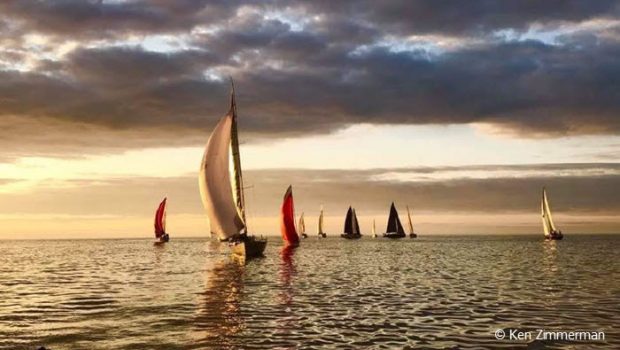


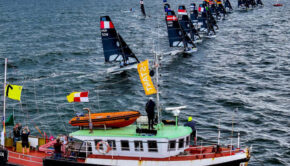
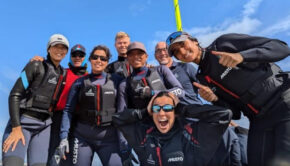
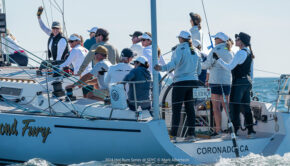
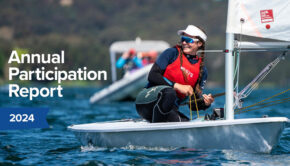
 We’ll keep your information safe.
We’ll keep your information safe.